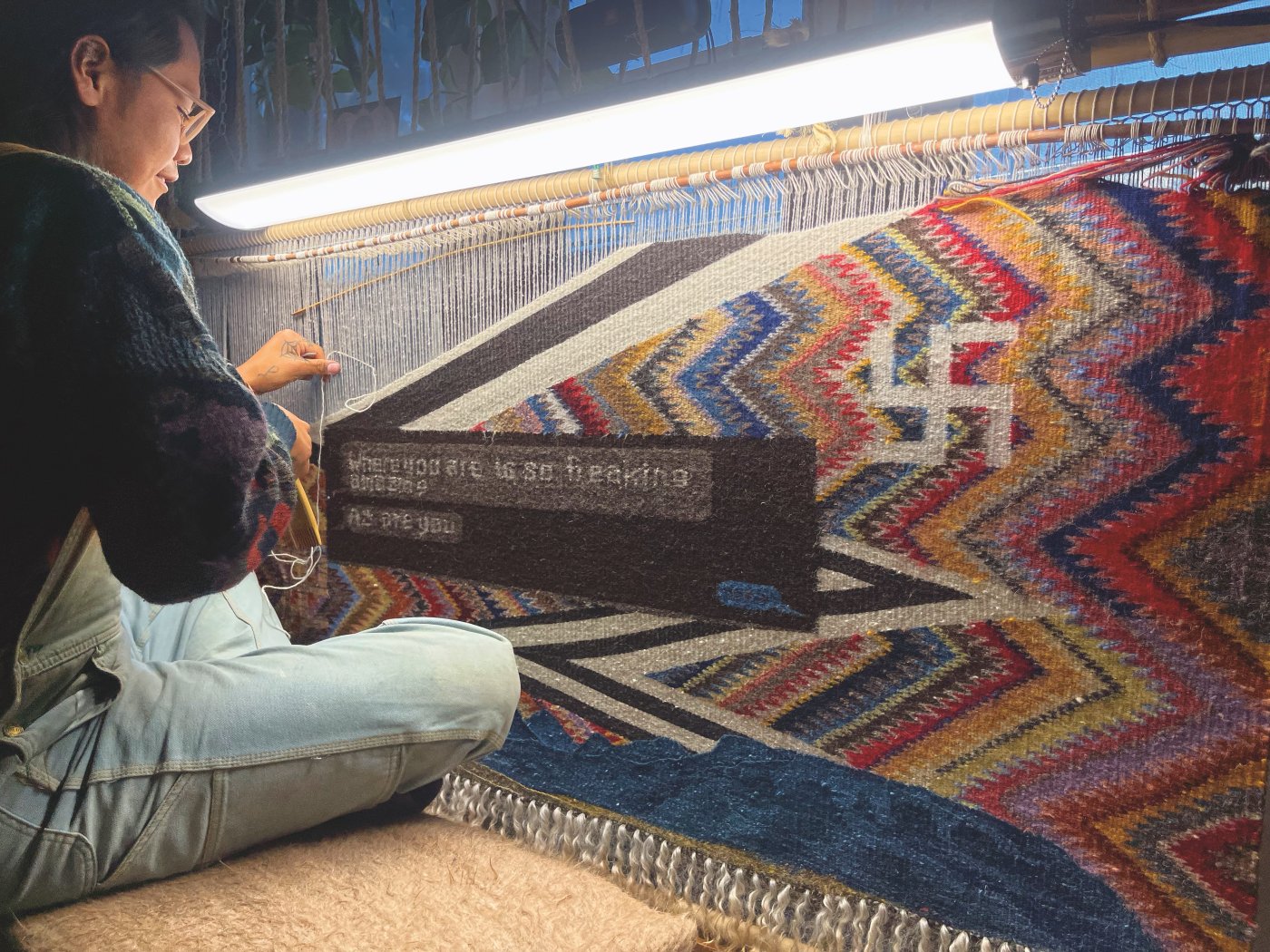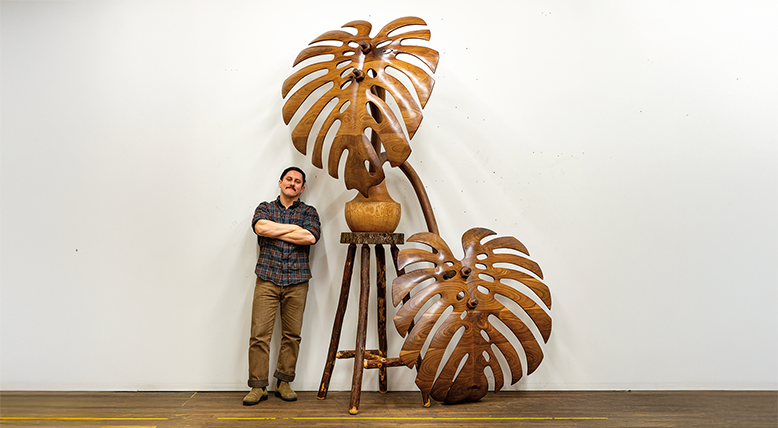Tyrrell Tapaha sits in front of a large Navajo loom in their living room, building up a section of woven lightning; the weaving comb packs the wefts in meditative rhythm. A wood-burning stove heats the room as the sixth-generation Diné (Navajo) weaver and fiber artist adds to their latest piece, Áadęę’ Hózhógoo Dooleeł: Cerebral Renaissance, on a cool afternoon in Flagstaff, Arizona.
The weaving, composed of commercial and handspun vegetal-dyed Navajo-Churro fleece, mohair, alpaca, and merino, depicts a fragmented composition of memory and place that pulses through every aspect of the textile. A brilliant white-and-black lightning current is boldly integrated into the multicolored eye-dazzler design that reverberates from a blue-and-green pictorial landscape. A personal vignette is positioned at the center, caught within the lightning. The familiar iMessage text bubbles read, “where you are is so freaking amazing” and “as are you” with the “…” typing-in-progress bubble.
“I’ve been venturing into visual abstraction,” Tapaha says. “In just taking pieces, breaking them apart, and putting them back together in some type of amorphous figure. That’s something that I want to play around with—the planning system in my head is very collage-esque.”
Tapaha, from the Four Corners area, is distinctly connected to the Carrizo Mountains on the Colorado Plateau, near T’iis Názbąs (Teec Nos Pos), Arizona. They inherited sheepherding and weaving practices from their great-grandmother, Mary Kady Clah, and other relatives. “It started with helping carding, helping with the spinning, and mechanically becoming familiar with a lot of these tools, and that’s also the breadth that has carried through this generational work for me,” they say. “I’ve taken a lot of responsibility in reclaiming and giving life to the tools I’ve inherited—both rhetorical and mechanical tools.”

Tyrrell Tapaha with their lamb, Chloe, at the family summer camp in Arizona’s Carrizo Mountains.








